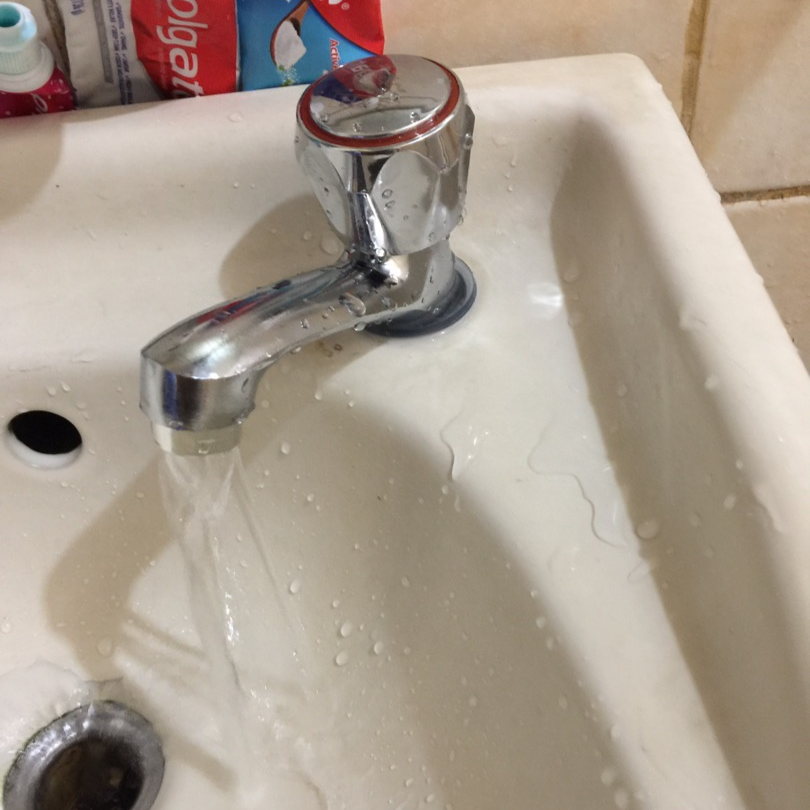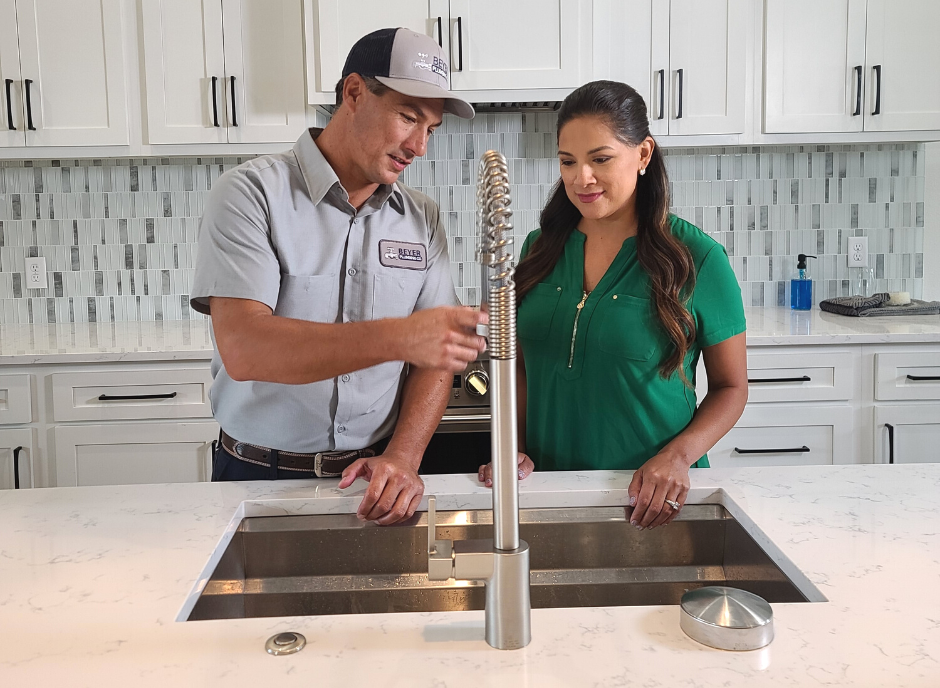When It's Vital to Deal with a Malfunctioning Faucet
When It's Vital to Deal with a Malfunctioning Faucet
Blog Article
Do you find yourself in search of facts on Why Are My Faucets Dripping (And Can I Fix It Myself)??

Trickling faucets may look like a small hassle, but their effect goes beyond simply the aggravation of the noise. From drainage to incurring unnecessary economic costs and wellness threats, neglecting a dripping faucet can cause numerous effects. In this short article, we'll look into why it's essential to resolve this usual home problem promptly and efficiently.
Wastefulness of Water
Environmental Impact
Dripping taps contribute significantly to water waste. According to the Environmental Protection Agency (EPA), a single faucet trickling at one drip per secondly can lose greater than 3,000 gallons of water per year. This not just strains water resources but also influences ecosystems and wildlife dependent on them.
Step-by-Step Guide to Dealing With a Dripping Faucet
Devices Called for
Prior to trying to take care of a leaking faucet, gather the necessary tools, consisting of a flexible wrench, screwdrivers, substitute parts (such as washing machines or cartridges), and plumber's tape.
Common Faucet Issues and Their Solutions
Recognize the sort of faucet and the specific problem creating the drip. Common issues consist of damaged washing machines, corroded shutoff seats, or defective O-rings. Refer to producer directions or on the internet tutorials for step-by-step advice on repair services.
Financial Expenses
Increased Water Costs
Past the environmental effect, trickling faucets can inflate water expenses considerably. The collected wastefulness over time converts into greater utility expenditures, which might have been stayed clear of with timely repair services.
Potential Property Damages
Moreover, long term dripping can bring about harm to components and surface areas surrounding the tap. Water build-up can create staining, corrosion, and even architectural concerns if left neglected, resulting in added repair work expenses.
Health and wellness Concerns
Mold and Mold Growth
The consistent visibility of moisture from a trickling tap produces an excellent environment for mold and mildew and mold growth. These fungis not just compromise indoor air top quality however likewise posture health and wellness risks, particularly for individuals with respiratory system problems or allergies.
Waterborne Illness
Stagnant water in dripping taps can come to be a breeding ground for microorganisms and other virus, increasing the threat of waterborne diseases. Contaminants such as Legionella germs grow in stationary water, possibly leading to significant illnesses when ingested or breathed in.
Do it yourself vs. Expert Fixing
Advantages and disadvantages of DIY Repair Work
While some may attempt to fix a leaking tap themselves, do it yourself repair services come with their very own collection of difficulties. Without correct understanding and tools, do it yourself attempts can exacerbate the issue or bring about incomplete fixings, lengthening the issue.
Benefits of Hiring a Specialist Plumber
Working with an expert plumber makes certain that the underlying root cause of the dripping faucet is dealt with efficiently. Plumbers possess the know-how and devices to detect and fix tap concerns successfully, saving time and minimizing the risk of more damage.
Environmental Duty
Private Contribution to Conservation
Taking responsibility for fixing dripping faucets straightens with broader efforts towards water conservation and environmental sustainability. Every individual's activities jointly make a significant effect on protecting precious sources.
Lasting Living Practices
By prioritizing timely repair services and adopting water-saving habits, people contribute to lasting living techniques that profit both present and future generations.
Safety nets
Normal Upkeep Tips
To avoid dripping faucets, execute routine maintenance such as cleansing aerators, checking for leaks, and replacing damaged parts quickly. Furthermore, think about mounting water-saving tools or updating to a lot more efficient fixtures.
Value of Prompt Fixes
Addressing trickling faucets as soon as they're discovered protects against additional water wastage and prospective damages, inevitably saving both water and cash in the long run.
Influence On Residential Property Worth
Understanding of Well-Maintained Residential Or Commercial Property
Preserving a building in good condition, consisting of addressing upkeep issues like dripping faucets, enhances its regarded value and desirability amongst prospective buyers or occupants.
Influence on Resale Value
Characteristics with well-maintained plumbing fixtures, including faucets, command higher resale worths in the real estate market. Attending to dripping taps can add to a favorable perception throughout home assessments and arrangements.
Verdict
Addressing a trickling tap exceeds plain ease; it's a crucial step toward conserving water, reducing monetary expenses, and securing health and property. Whether via DIY repair work or specialist support, doing something about it to fix trickling faucets is a little yet impactful method to promote accountable stewardship of resources and contribute to a healthier, more lasting future.
How to Fix a Leaky Faucet: Step-by-Step Repair Guide
A leaky faucet may seem like a simple annoyance, but if it's not fixed promptly, that leak could cost hundreds to potentially thousands. From water damage to mold, mildew, and high water bills, even a tiny leak can be catastrophic if left unattended. Damage like this can even affect the overall value of your home, so it's important to take the right approach for leaky faucet repair. You may need the help of a plumber in some cases, but we've got a few tips you can try on how to fix a leaky faucet before calling the pros.
Four Faucet Types
When you're learning how to fix a leaky faucet, the first step is knowing what kind of faucet you're working with! There are four common types.
Cartridge Faucets
Cartridge faucets come in one- or two-handled varieties. In one-handled cartridge faucets, hot and cold water combines in a single cartridge. In the two-handled versions, hot and cold water are controlled separately and mixed in the faucet.
Ball Faucets
Ball faucets have a single lever you push up and down to adjust the pressure and rotate to change the temperature. A slotted metal ball controls the amount of water allowed into the spout.
Compression Washer Faucets
They're the oldest type of faucet, but they're still used in many homes — especially older ones. Compression faucets have two separate handles that, when turned, raise or lower the washer that seals a water valve. This valve stops water from flowing through the faucet when it is turned off.
Disc Faucets
Disc faucets rarely need to be repaired due to their maintenance-free design. The water flow is controlled by two discs — the upper one raises and lowers against a fixed lower disc, creating a watertight seal. If your disc faucet starts leaking, you may need to replace the seals or clean residue buildup from the inlets.
Fixing a Leaky Faucet
Step 1: Turn Off the Water
Whether you're learning how to fix a leaky bathtub faucet or how to fix a leaky kitchen faucet, always turn off the water supply to your working area when you're fixing a leak. The last thing you want is a flood added to your list of things to fix.
Look for the shutoff valves below your sink or around the tub and turn them clockwise to stop the water flow. If your faucet doesn't have shutoff valves, you may need to turn off the water for the whole house. Check to make sure it's off by turning the faucet on. If nothing comes out, you're ready to start the repair.
Step 2: Take Apart the Faucet
How you disassemble your faucet depends on the type of fixture you have. You can use a flathead screwdriver to remove the caps on top of the handle or handles for cartridge and compression faucets. Inside, you should see handle screws. Unscrew these with a screwdriver to remove the handle.
Disc- and ball-style faucets will typically have an inlet screw near the handle, and removing that will reveal the interior of the faucet.
Detach the Valve Stem
For cartridge- and compression-style faucets, you'll see the inner valve stem or cartridge once you remove the faucet handles. If you have a compression faucet, unscrew the brass valve stem. If you have a cartridge faucet, pull out the cartridge. If your cartridge has been in place for a while, it may require some tools or extra force to remove it due to mineral deposits.
Examine and Replace Parts
Once you've removed the parts, check them out to confirm what needs to be replaced. You may see corroded rubber washers, O-rings, stems, or cartridges. On a ball-style faucet, check the seats and springs for damage.
If you need to repair a leaky disc faucet, check the inlet and seals on the lower disc.
Once you determine what parts must be replaced, visit your local hardware store. Bring the damaged parts with you to ensure you can purchase the correct components to replace them.
Clean Valves and Faucet Cavity
If you've removed a stem or cartridge, you may notice mineral buildup in the faucet's threads. Use white vinegar to clean the valve seat by soaking it for a few minutes, then scrub it away with a soft toothbrush and rinse with warm water. You can also clean the interior of the faucet in the same way.
Reassemble the Faucet
Once your faucet is cleaned and the required parts have been replaced, it's time to reassemble it. Put the pieces back together and slowly turn the water supply back on. Doing this slowly is crucial because too much initial water pressure can damage the new hardware you've just installed.
https://homewarranty.firstam.com/blog/how-to-fix-leaky-faucet

I stumbled upon that write up on when doing a search on the internet. Liked our posting? Please quickly share it. Help someone else locate it. Thanks for going through it.
Report this page